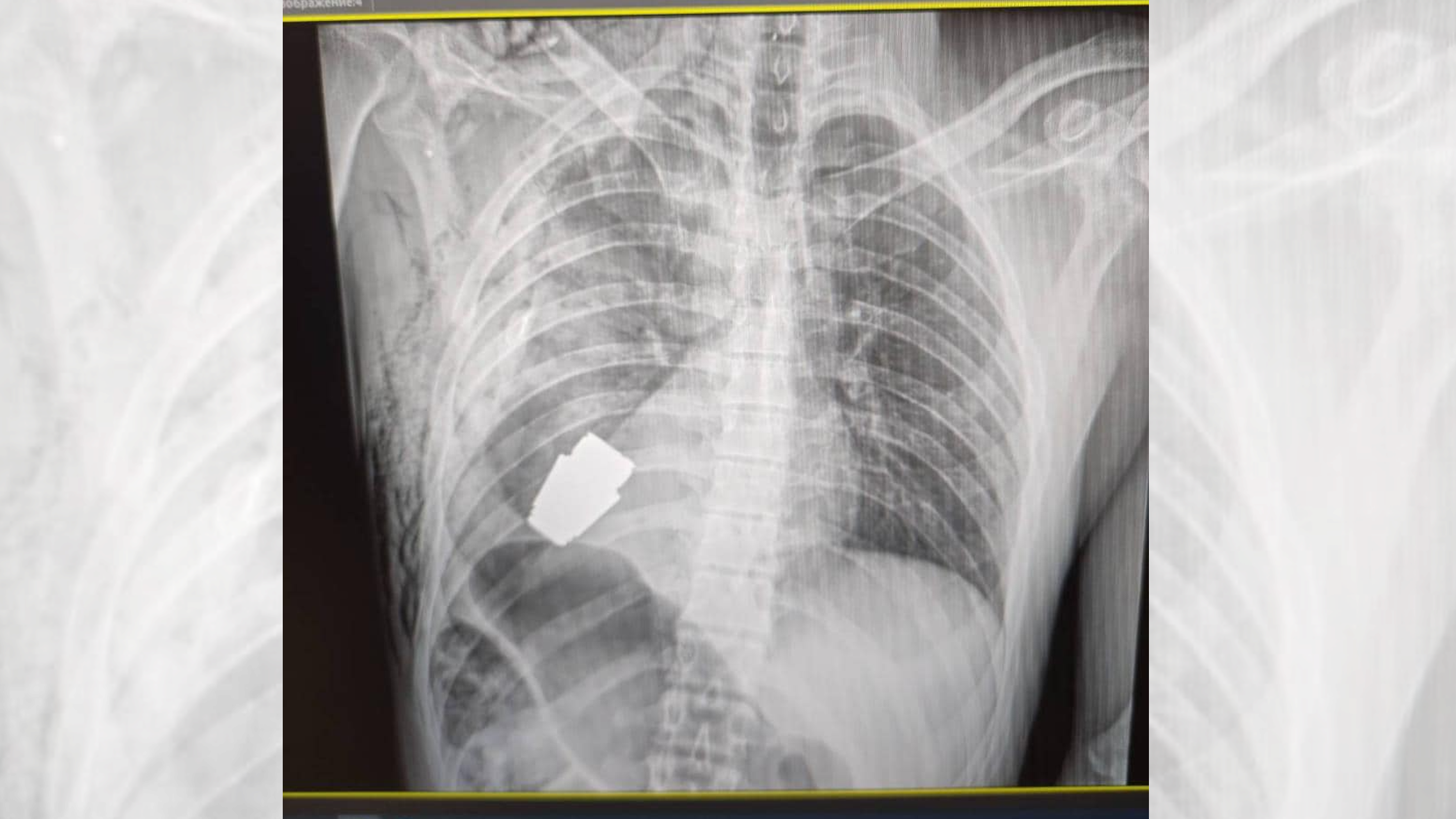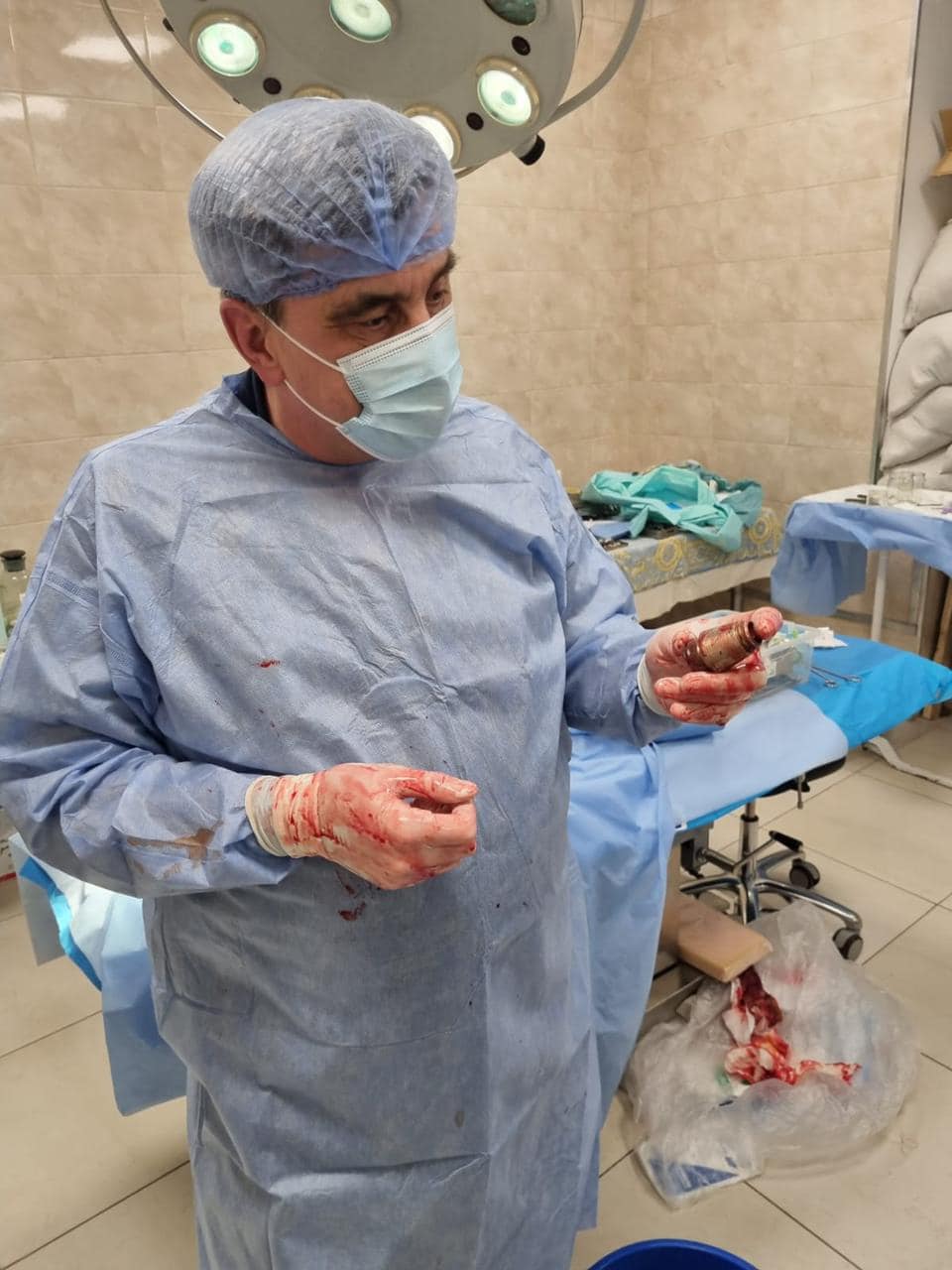Doctors risked their own lives to remove a live grenade from a Ukrainian soldier's chest
The surgeons had to refrain from using common procedures that could have detonated the grenade.

Ukrainian military doctors have successfully completed a rare and dangerous operation — removing an unexploded grenade from a patient's chest, according to senior Ukrainian officials.
On Jan. 9, Hanna Maliar, Ukraine's deputy minister of defense, posted an X-ray image on Facebook showing the unexploded ordnance lodged inside the chest of a Ukrainian soldier.
"Military doctors conducted an operation to remove a VOG grenade, which did not break, from the body of the soldier," she wrote.
Maliar wrote that Andrii Verba, one of the most experienced surgeons in Ukraine's armed forces, carried out the operation, and that he was assisted by two sappers, or combat engineers, to protect medical staff and make sure the operation was done safely. Alongside the patient X-ray, Maliar’s post shows Verba holding the grenade after it was removed. VOG grenades are around 1.6 inches (4 centimeters) long and can be fired from grenade launchers as far as 0.2 mile (400 meters) from a target, according to the BBC.

Maliar also wrote that doctors did not use electrocoagulation during the surgery — a common method to control bleeding that works by using electric current to burn the edges of blood vessels, cauterizing a wound or incision. In this case, doctors feared the electric current would set off the grenade.
"The unexploded part of the grenade was taken from under the heart. The grenade did not explode, but remained explosive," wrote Anton Gerashchenko, Ukraine's internal affairs ministerial adviser, in an update on Telegram (translated from Ukrainian). He said that the patient is about 28 years old and is undergoing further rehabilitation and recovery.
"There have never been such operations in the practice of our doctors," he wrote.
Sign up for the Live Science daily newsletter now
Get the world’s most fascinating discoveries delivered straight to your inbox.
The operation may be a first in the current war between Ukraine and Russia, but surgeries like it have happened before. A 1999 study in the journal Military Medicine looked at U.S. military data and found 36 cases of unexploded ordnance being removed from patients between World War II and the study's publication. Though four patients died of their injuries before surgery could be attempted, the other 32 operations were successful.
In 2006, a team of U.S. military doctors in Afghanistan removed an unexploded grenade from the abdomen of Pvt. Channing Moss, a U.S. soldier. And in 2014, doctors removed potentially explosive ammunition from the head of a 23-year-old pregnant woman in Afghanistan. Though the object turned out to be a non-explosive metal bullet, doctors took precautions similar to those taken by Ukrainian doctors in the recent case, such as forgoing the use of an electrocautery device, which they documented in a 2016 case report. The U.S. Department of Defense's Joint Trauma System even has official guidance on how to handle such cases.
Nevertheless, the successful Ukrainian surgery marks a case where everything went right in a nerve-wracking, potentially deadly situation.
"I think this case will go down in medical textbooks," wrote Gerashchenko.

Rebecca Sohn is a freelance science writer. She writes about a variety of science, health and environmental topics, and is particularly interested in how science impacts people's lives. She has been an intern at CalMatters and STAT, as well as a science fellow at Mashable. Rebecca, a native of the Boston area, studied English literature and minored in music at Skidmore College in Upstate New York and later studied science journalism at New York University.









